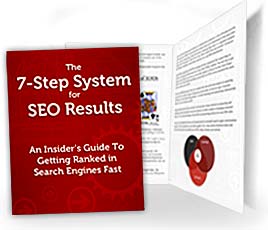
Effective ad copy depends more on strong sales ability than writing ability.
Quick early Saturday evening blog post…
I’ve done a lot of research on the topic of copywriting over the past 3 years, studying Carlton, Kennedy, Halbert, Bencivenga, Pagan, and many more copywriters and marketers….
And I’ve come to believe that it’s not the writing that’s important at all. To illustrate the example, David Ogilvy in “Ogilvy on Advertising” made the point that headlines get read 5 times more than copy does. The point is, the writing is almost irrelevant.
The marketing / persuasion techniques behind the ad are what’s important. I think that it starts with positioning. Dan Kennedy / Joe Sugarman give this hint: Make yourself #1 in the world in a category of one serving a specific WHO.
So Dan Kennedy gives the example of his newsletter that he started 30 years ago, saying it was the “Largest Marketing Newsletter Serving the Chiropractic and Dental Professions,” keeping to himself that it was the ONLY one.
Most people don’t think for one second about unique positioning or why it’s so important to the livelihood of their business. I think it comes down to this: if you haven’t uniquely positioned yourself, then you’re a commodity. And a commodity is ordinary. There’s nothing different about your product or service as compared to someone else’s. Therefore, a race to the bottom begins where companies compete on price, compromising their service, their marketing capabilities, and customer loyalty initiatives. So yes, positioning yourself to be desirable to a profitable WHO is very, very important. Make sure you write that one down.
Anyway – I took a bit of a left turn there, I digress…
Back to persuasive copy…
It’s very important that you check off the six weapons of influence in every sales pitch that you create – Authority, Liking, Social Proof, Reciprocity, Commitment & Consistency, and Scarcity. Good copywriting just really combines all of these, such as free “giveaway” content or “money magnets,” to establish reciprocity, liking, authority, and commitment, as an example. Then there’s the limited number available (scarcity) and the risk-reversal (removing the objection), and of course bonuses and freebies. Social proof comes down to things like testimonials, a proven track record, reviews on external sites, and 3rd-party validation. If you don’t have any track record or testimonials you can “borrow” social proof from 3rd-parties. For example, you can “link” yourself to brands that are well-known, or cite statistics around the topic you’re trying to persuade me about.
Authority comes down to demonstrating expertise on your topic. The law of commitment & consistency states that people act consistently with public commitments – you get your customer to commit to using your service or product to get the result they want. An example of how to do this is to have an entry level product of $1 to turn leads into customers – a subtle but important psychological shift. Another example is an information product that sells for $2,000. That information product is just information – content that you can probably get in a book. But someone who pays $2,000 for an information product is far more likely to commit to acting on the information then if they pay only $20 for the product.
Speaking of information products, a great tactic that information marketers are using these days is the “sideways sales letter.” The sideways sales letter in a nutshell is a sales process where you arrive on a landing page, watch an initial video, opt-in, and then the rest of the sales pitch is delivered over a sequence of 7-15 days. The sideways sales letter takes the time to nurture the relationship and establish a bond (liking) and authority, and giving stuff away with reciprocity.
And then the only pieces left in this sales process are 1 – Establishing credibility (by saying you were there yourself, and describe the problem), 2 – Identifying the problem and twisting the knife, 3 – Revealing the opportunity, 4- The benefits they’ll receive (physically, monetarily, emotionally) 5 – Other sales tactics like “Future Pacing,” such as framing a non-decision as a negative decision by asking to imagine what it would be like to wake up in a year and they still have to deal with their problem.
It works very well because a prospective customer really needs to know who you are, know about you, trust you, and respect you, all before they buy from you. We all have psychic tentacles that reach out seeking some kind of credibility before we buy. All of these mental switches need to be triggered before you make the sale.
And finally the key to making it all work is the market research – being dialed in to your prospect’s needs and wants. And being able to speak their language, so that you seem to be one of them. The whole point of niche marketing online is to focus on the %1 of the population who are qualified and eager to buy your product. Identify them, build your product for them, focus your marketing on them, and develop a plan to find them.
I know you’re probably thinking that you already know all of this stuff, and I’m sure you do. But the point, I think, is that it really isn’t the writing that’s important at all so much as the sales techniques that are applied to it. When you put it all together, you can’t help but drive demand for the product. Persuasive advertising is more about employing strong, proven sales techniques then simply trying to place a product or service on a pedestal.













